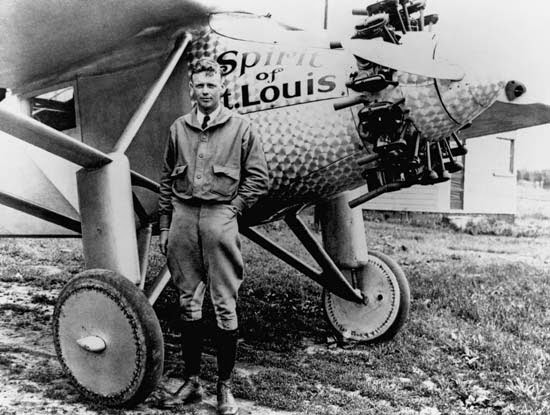When
Charles Lindberg became the first person to fly non-stop across the
Atlantic Ocean in 1927, many engineering challenges had to be considered
but it was the ingenuity of Lindberg himself that came up with the
solution to one of the final problems.
The
Spirit of Saint Louis was a single engine plane built in 1927 and
designed for the sole purpose of flying non-stop from New York to Paris,
which until that time had never been done. Lindbergh was a highly
skilled pilot and was determined to be the first to make the flight and
he was very clear about what he thought the plane needed in order to
make the historic flight.
The plane would need to carry a significant
amount of fuel for the 3,600 mile flight, and to compensate for the
heavy load of fuel it would need to do so without many essential
components to reduce the overall weight. Some of these components that
Lindbergh would do without included a radio, parachute, fuel gauges and
navigation lights. The plane was also designed with an extended wingspan
to improve its aerodynamic efficiency with the heavy fuel load, but
apart from that the plane was actually very small. So small in fact that
when it is viewed from the rafters in the National Air and Space Museum
in Washington DC it seems similar in size to the small model planes
that most young boys hang from the ceilings of their bedrooms.
The
large quantity of fuel would need to be held in various tanks
throughout the plane in order to distribute the weight. But the bulk of
the fuel would be placed in a large tank and placed directly in front of
where Lindbergh would sit throughout the flight. Lindbergh believed
this was necessary in order to maintain a good center of gravity and,
therefore, led to the creation of the most ingenious features of the
plane.
With
the large fuel tank placed directly in front of where Lindbergh would
sit, and to maintain the best possible aerodynamic profile of the plane,
Lindbergh decided that he didn’t need a front windscreen to be able to
see forward. The plane would only have small windows to see out the
sides and he could occasionally veer the plane from side to side to get a
quick view of where he was headed. But landing the plane would be a
problem if he couldn’t see forward.
There
would only be one logical idea and that would be to install a periscope
on one side of the plane that would allow Lindbergh to see forward and
enable him to land, hopefully safely in Paris. The simple installation
of the periscope permitted for all the other crucial design features to
be included in the building of the plane and allowed Lindbergh to safely
land the Spirit of Saint Louis at Le Bourget Field in Paris on May 20,
1927 from New York after 33.5 hours of flight.
All
the air and space craft on display at the Museum have their stories and
place in history, including the original Wright Brothers Flyer and the
Apollo 11 command module, but none of these famous engineering creations
exhibit American ingenuity more than the Spirit of Saint Louis.
Reference: http://blog.10dayads.com/the-spirit-of-saint-louis-defines-the-spirit-of-american-ingenuity/


No comments:
Post a Comment